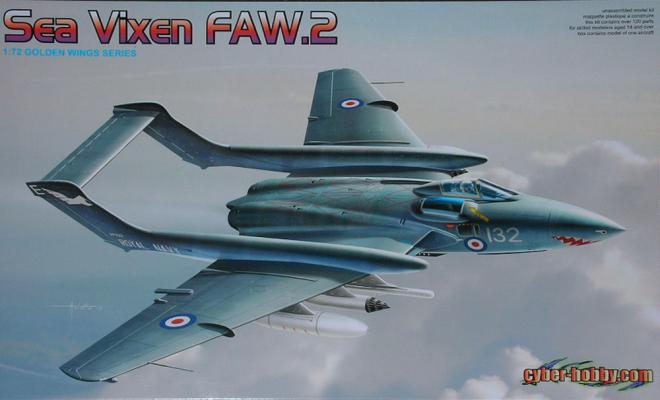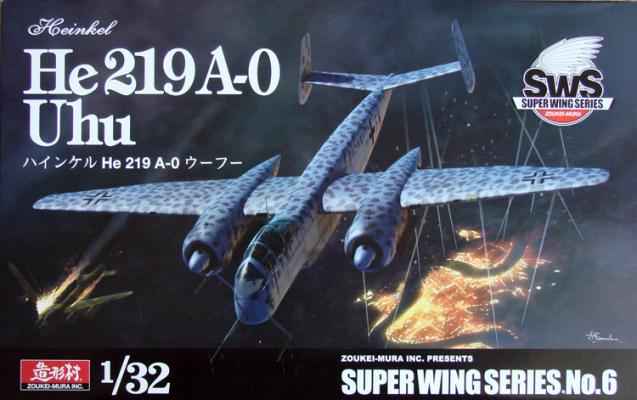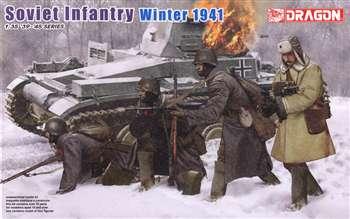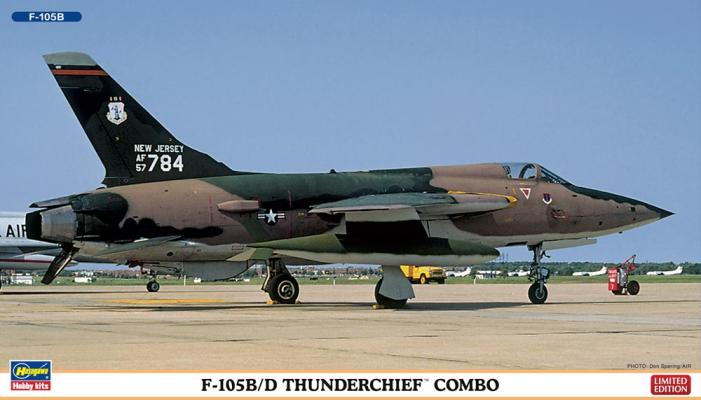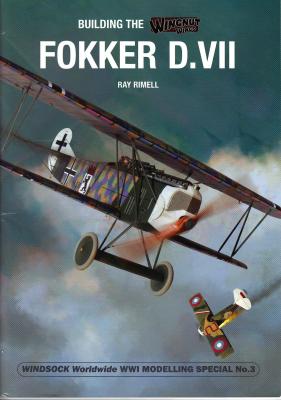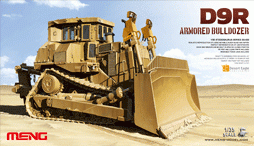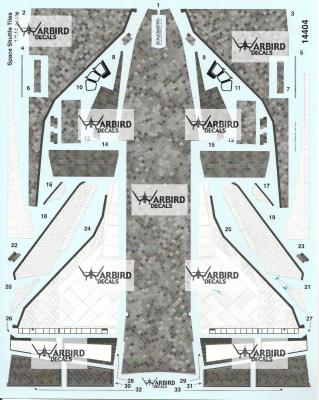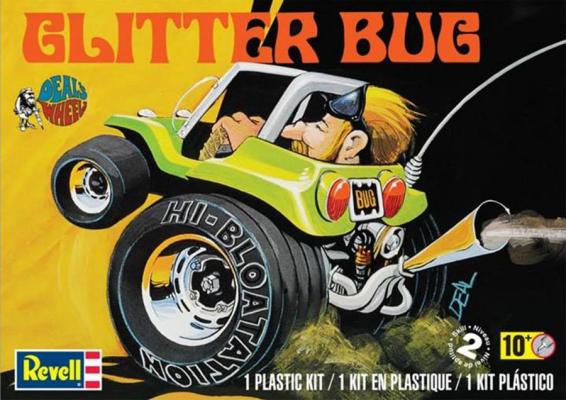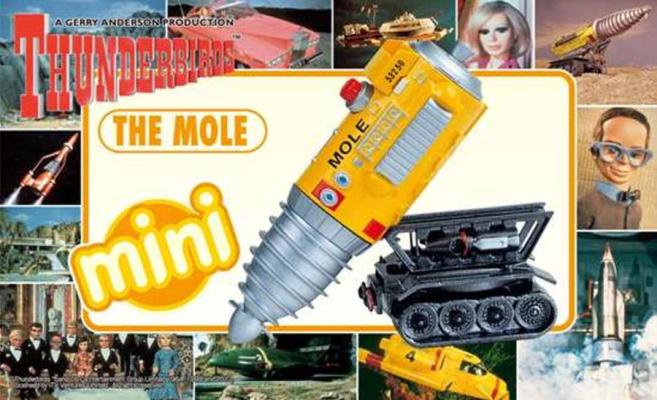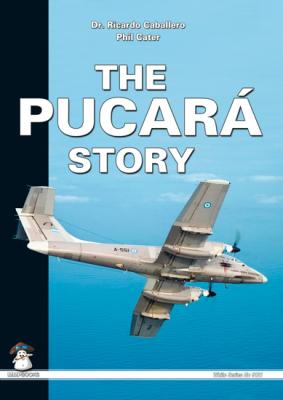The Vixen was originally developed for the RAF, but was turned down in favor of the Javelin for a missile-armed interceptor. The Fleet Air Arm picked it up and it was tailored to their needs, replacing the Sea Venom. The later versions, the FAW 2 (FAW=Fighter, All Weather) had saddle tanks added to the two booms to increase fuel capacity and thus range as well as better electronics. At the time, it was the heaviest aircraft ever operated by the FAA and was twice the size of the Venom it replaced. Due to all that weight, it only managed to be about 75 mph faster than the Venom, but it did carry the Red Top missile for air-to-air combat, which the Venom could not, as well as the Bull Pup air-to-ground missile. It served with the FAA from 1959 'til 1974.
What's New
Again, many, many thanks to Mr. Hideyuki Shigeta for honoring me with the privilege of building the Super Wing Series He 219 Uhu (Eagle Owl) model kit for public review as an IPMS Reviewer Corps representative. I am deeply appreciative of the trust and confidence shown in me by both Mr. Shigeta and the IPMS Reviewer staff. I am delighted to report on the last stages of construction!
When Germany invaded the Soviet Union in June of 1941, Hitler expected the whole country to fold quickly after the magnificent show of force of the German War Machine. But it was the Russian winter that slowed the German advance and forced them to go on the defensive. Unable to capture key cities like Mosow and Leningrad, and clad in their summer uniforms, the Germans faltered as the Soviets took the offensive, and served up Hitler’s first major defeat.
History Brief
When the F-105 Thunderchief entered service in 1958, it was the heaviest single-engine combat aircraft and was commonly known as the "Thud" by its crews. In March 1956 the USAF placed an order for 65 F-105Bs and 71 were built. Although it set speed records the 105B was besieged with problems, typically the F-105B required 150 hours of maintenance for each flying hour. Most of these problems were addressed under Project Optimize and by 1964 it was relegated to ANG squadrons.
Anyone who has peaked inside the box of a WingNut Wings 1/32nd WW1 aircraft kit knows the potential joys that await the builder of such a kit. If you are at all familiar with WW1 aircraft modeling, you will undoubtedly have heard of Ray Rimell’s Albatros Productions Ltd., publishers of Windsock International modeling magazine and Windsock Datafiles etc. So imagine my delight when IPMS USA gave me the opportunity to review a publication that combines the two: a Ray Rimell publication covering the building and detailing of WingNut Wings’ four 1/32nd Fokker D.VII kits! Read on……….
Ever since I was a young lad, and would pass construction and road works sites while out driving or walking with my Father, I have loved bulldozers. Big, yellow and Caterpillar! Yet whenever I went to try and build a model of one, I always struck out. The only kit I could ever find of a Caterpillar product in injection plastic was a 1/25th scale kit, which was either too expensive for me as a young hobbyist, or the wrong scale once I got a job but moved on to focus on modeling military subjects in 1/35th scale. This year, however, Meng Models from China, a relatively new player in the model kit industry, has hit the ground running and provided the 1/35th scale military modeler with an amazingly detailed injection model of the mighty Caterpillar D9R armored bulldozer. Read on!
For modelers building scale models of the Space Shuttle one of the more difficult challenges has been to replicate the thermal shielding on the spacecraft, whether the tiles or the blankets. In the smaller scales, this can be a real challenge and as a result one of the most sought after after-market sets has been thermal tile decals. Meteor Productions, in their Cutting Edge decal line, was the first company to offer tile decals. These deals proved extremely popular. That company has been gone for nearly 5 years and the decals have become very hard to find, usually commanding high prices. Enter Warbird Decals, a new company in the real space market. They have introduced a new line of thermal tile decals in the scales of 1/72, 1/100, and 1/144 to meet the ongoing demand.
Memory Lane……As a bonafide TreadHead, I am not much of a model nostalgic. My first armor kit was the old 1/48 Aurora Sherman. While it was a great kit and got me hooked on my TreadHead ways, I have no desire to find one and build it again. However, building the first model that I ever built would be neat! I actually have one of those. I paid $95.00 for it on Ebay and thought I would never get to actually build it as I could not bring myself to open the seal and have at it. However, I might get to do just that thanks to Revell. Those of you that are car builders know the name Dave Deal. If you don’t, look him up. He hooked up with Revell back in the 1970s and released thirteen model cars and four aircraft. These were not your typical run of the mill kits. They were three dimensional caricature models. They had oversized parts and even more oversized driver’s heads. My very first model was the Baja Humbug. My second was the Glitter Bug.
Thunderbirds are GO!!!!! For those of my generation, that was a great call tag! For the younger crowd, I am sure they have still heard about International Rescue. Gerry and Sylvia Anderson created one of the greatest series ever to be broadcast! There were only two 50 episode seasons created. However, those two seasons spawned two movies and tons of different merchandising items to include plastic and die-cast models. Bandai, Imex and Aoshima are the ones I can remember. I have seen several others over the years adding their twist to the old classic which just proves the greatness of the original models used in the series.
Aoshima’s website is not super user friendly but as near as I can tell they offer at least 12 different Thunderbird models. Six are part of their MINI series and six in their other line. The mole has currently two different versions in their inventory. One of the kits is in 1/72 and I believe is a copy of the older Imex kit and this other MINI mole.
Mushroom Model Publications released a new book in their “White Series”, devoted to the Argentinean designed and manufactured “Pucará” (“Stone Fortress” in the Quichua native-american language).
The Pucara is an indigenous design of a twin ending light attack/COIN airplane. It has seen service in Argentina, Uruguay, Colombia, Sri Lanka and the UK (captured). The list of countries that explored –and even placed orders- for them is much larger, but for different reasons the export orders never materialized.

